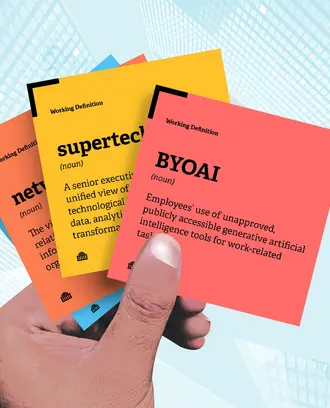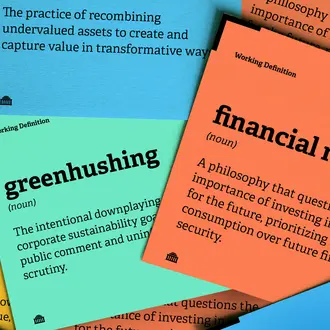Credit: Rob Dobi
How do you win an election? You can spend money. You can canvass neighborhoods. You can take meals at small-town diners, crisscross the country by bus, parade your charismatic family before the cameras.
But don’t forget the Twitter bots.
“If you’re smart about putting bots in a network in particular places, you can pretty easily manipulate people’s opinions,” said Tauhid Zaman, associate professor of operations management at MIT Sloan. “And whether an election or something else, this can help you achieve the outcomes that you want.” In a new working paper coauthored with MIT Operations Research Center graduate student David Scott Hunter, Zaman outlines how to optimize shifts in ideology using bots in a social network.
They begin with the assumption that, though people update their opinions as they receive new information, this process dampens over time; opinions harden. “You’ll listen to me less and less if you already have a lot of information, and something new won’t likely change your opinion,” Zaman said.
Working from this foundation, Zaman and Hunter built a model of opinion dynamics in social networks and dropped in a handful of bots whose opinions were preset and immutable (so-called “stubborn agents”). They developed an algorithm to identify targets for the bots to influence. These were generally people who didn’t already have firm opinions on a particular issue and who could reach many other people. Once these targets were identified, the bots could go to work, pushing their message on the targets.
One way to measure the effectiveness of this process would be to observe how the average opinion in the network changed as a result of the bots. Overall, were people more inclined to align themselves with the bots after a set period? But for Zaman and Hunter, a more interesting consideration was the specific number of individuals whose opinions shifted over a set threshold. “This is an important measure because once you get over this threshold, maybe then you go and do something like buy a product, watch a movie, or join a protest,” Zaman said. “Or maybe you go vote.”
It turns out the structure of the underlying network has a big impact on how effective bots can be. Zaman found that on polarized networks, a few bots are able to shift a disproportionate number of people over a threshold. This is important because many modern social networks have such a polarized structure, with most people only maintaining friends with people of similar ideologies. This is even more relevant given the ongoing discussion of foreign meddling in U.S. elections, and the upcoming 2018 mid-term elections. Because of how polarized the U.S. has become in recent years, the democratic process is highly vulnerable to this type of cyberattack, Zaman said. “When it comes to bots in a polarized network, a little bit goes a long way.”
This is the third in a three-part series examining new work about Twitter, influence, and bots by MIT Sloan associate professor Tauhid Zaman. Read 'Solving Twitter's follow-back problem' and 'A new method for rooting out social media bots.'



